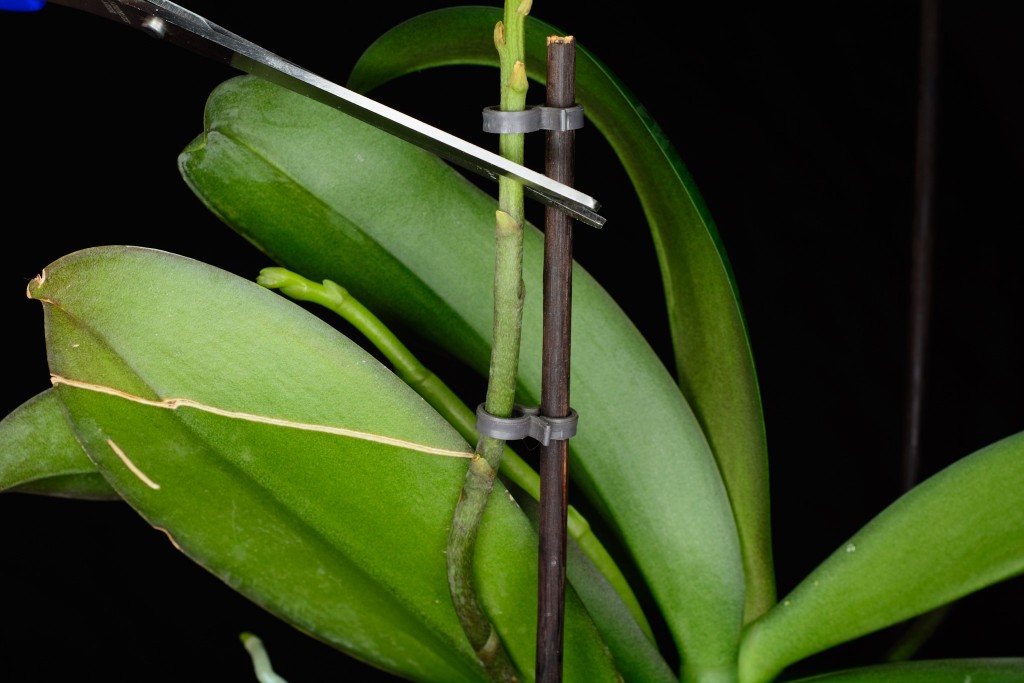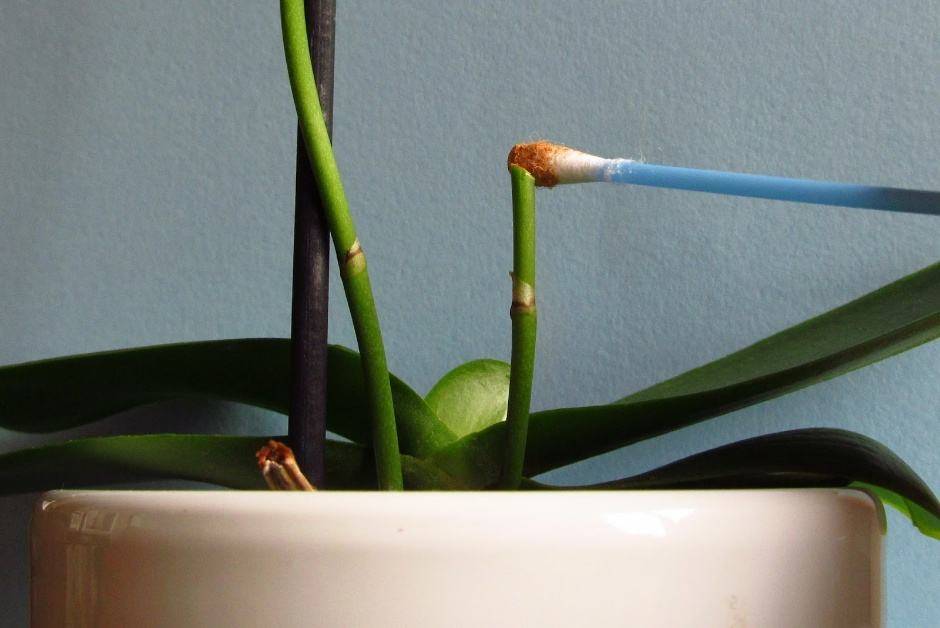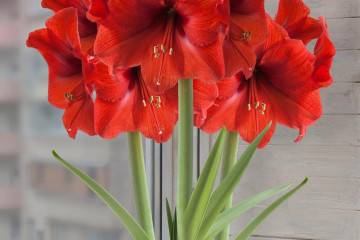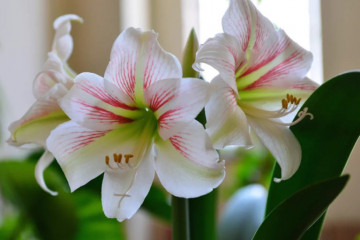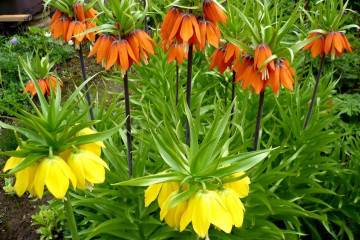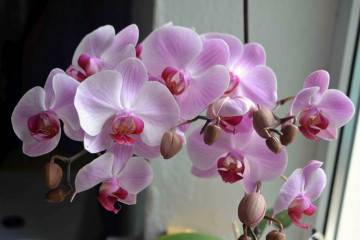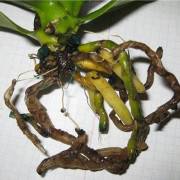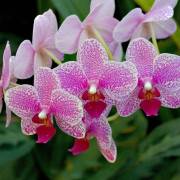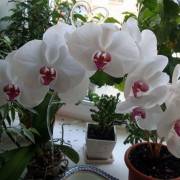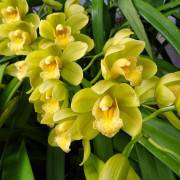How to prune an Orchid before and after flowering
Content:
Phalaenopsis is most often found in home breeding of orchids - it is not as whimsical as other varieties and pleases with its flowering for a long period of time. After flowering, many plant owners immediately cut off the stem, after which the plant recovers for a long period and does not throw out new shoots, and some monitor the stem for several weeks, and if it begins to dry out, they immediately cut it off. Therefore, many have the question of how to cut an orchid after flowering correctly. This article will answer this question.
Do I need to prune the orchid
Orchid bloom lasts from 2 months or more, but some of its varieties, for example Phalaenopsis, can delight with their flowering twice a year. You can determine the time of pruning an orchid by its color; closer to the end of flowering, it acquires a waxy shade.
But experts advise not to rush and observe the plant for a while, because new buds may appear on the old stem, but if this does not happen, and the arrow is completely dry, then you can start pruning.
It sometimes happens that the tip of the stem is dry, but the buds are a little swollen, which indicates imminent flowering. In this case, the peduncle should not be completely removed, but only the withered part is slightly higher than the green bud. At the same time, flower growers do not give a 100% guarantee that the plant will bloom again.
When to trim
Do I need to prune my orchid after flowering? A question that interests many owners. After all, incorrect and untimely pruning can lead to a long dormant period of the plant.
As mentioned, flowering lasts from 2 to 6 months, but this is also influenced by proper care, plant health and growing conditions.
If the owner is not 100% sure what kind of flower his flower is, then it is necessary to observe for some time how the peduncle behaves:
- dries up completely;
- dries up partially;
- changes its color to yellow, after which it dries.
The fact is that there are varieties of orchids on which buds grow almost instantly after flowering, so it is not recommended to cut off such stems.
Therefore, it is worth figuring out in which cases pruning is necessary, and in which not:
- Withered or faded flowers. In this case, it is not necessary to prune the plant yet, because there is a high probability that new buds will appear. The only thing that is allowed to do is to shorten the stem a little. This will only become an additional incentive for the formation of a new shoot.
- Green shoot. If it does not dry out, then you should not touch it, because after 10 weeks new buds may form. The only thing that can be done is to cut off the peduncle and put it in water to form a baby.
- Drying of the stem. If it has completely dried out, then it is necessary to remove it. But if it is still green, then you should not touch it, because it saturates the plant with useful trace elements and nutrients for further growth and restoration of the orchid.
- If the stem gradually begins to fade, but there are dormant buds on it, then there is no need to rush to cut them, because there is a possibility that they will wake up and either children or flowers will appear.
Plant pruning process
Orchid pruning occurs only at a certain time, and if you do it arbitrarily, the plant will experience great stress and it will not be in vain. Therefore, you need to know how to prune an orchid after flowering and when it is best to do it.
It is best to prune after flowering, as a result, the flower will have the strength for the fastest recovery. But if the flower is sick, then this must be done as quickly as possible in order to save the plant.
Essential tools for pruning a plant
Before you start pruning plants, you should prepare the following tools:
- secateurs;
- a substrate (if there is a need for a plant transplant);
- activated carbon or ash;
- pot.
Roots
Pruned only if rot or parasites have appeared.
They do everything step by step:
- Water the roots abundantly.
- The plant is removed from the pot.
- The roots are cleaned of the substrate and washed under running warm water.
- Rotten parts are carefully removed.
- Treat the trimmed places with ash or brilliant green.
- Dry the roots and place in a new substrate.
As for the aerial roots, they are cut off in the event of death or decay. This situation can arise if you overdo it with watering, or vice versa, the plant does not have enough water.
Peduncle
After the arrow is completely dry, you do not need to cut it off at the very root, you should leave a small stump, 1 cm high, because there is a chance that another arrow may appear from it, or a baby.
Stem
If rot has formed at the point of plant growth, then it is necessary to carefully eliminate everything step by step:
- Cut off the place of decay so that no dark spots remain.
- Treat the wound with brilliant green, but if the cause of the problem is caused by infections, then the cut site is treated with fungicides.
- Inspect your orchid regularly to prevent further decay.
Leaves
Can orchid leaves be trimmed? Florists claim that it is possible only in the following cases:
- To renew the plant, the bottom leaf is torn along the middle furrow to the base and both halves are removed.
- If the leaf has received a sunburn, then only the damaged area must be cut off 1 cm higher.
- If rotting has formed on the leaf or it turns yellow, then it is completely eliminated.
Arrows
Sometimes it happens that after flowering, new arrows appeared on the stem. If there are one or two of them, then you shouldn't touch the plant.
But it happens that there are a lot of them, in this case the orchid may not withstand the weight of the flowers and the arrows are shortened by 3 cm. Thus, there will be fewer flowers, but they will be larger and brighter.
Cutting site processing
If the plant is properly cared for, it will delight its owner with long and long flowering. But it is worth remembering that if the flower was cut off, then the cut points must be processed so that pathogenic bacteria do not penetrate into them. Thus, the plant will be protected and healing will take place much faster.
The following is used as a disinfectant:
- iodine;
- brilliant green;
- Activated carbon.
Orchid care after pruning
Shortening the stem or completely removing it is always stressful for the plant and therefore, after carrying out this procedure, flower growers recommend not to disturb it.After a while, you can start caring for the orchid, as before the moment of cutting: water moderately, spray the leaves and roots.
As with every plant, Phalaenopsis needs some rest time to gain strength and replenish energy reserves before the next growing season, so for 2 months the flower can be in a dormant state.
At this time, it is important to observe the temperature regime: at night not less than 16 degrees, and during the day not more than 24 degrees. It is advisable to avoid fertilizing, reduce the amount of watering and keep away from heating appliances.
If the plant was cut in the summer, then it is advisable to avoid direct sunlight on it; for this, the window is closed with a curtain or a matte film is used.
After pruning, the plant can bloom a second time either after two months, or sometimes it will take about a year to do this.
The incredible orchid flower will require careful home care after flowering. How to prune a plant is correctly written above. It remains only to wait until it begins to delight with the appearance of new buds. In order to achieve abundant and long-lasting flowering and not harm the flower, you must do everything gradually, slowly and following the recommendations of the flower growers. It is important to remember that each pruning is a kind of stress for the plant, therefore, after the procedure, it needs to be given proper care and very soon it will delight you with new and bright flowering.

